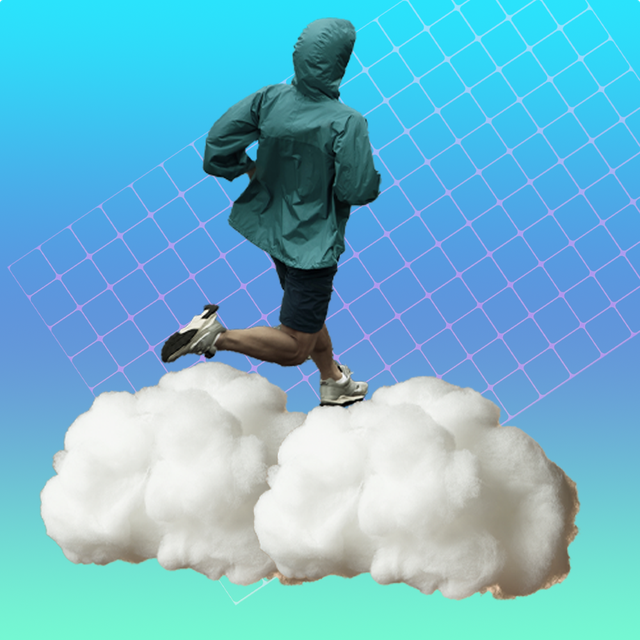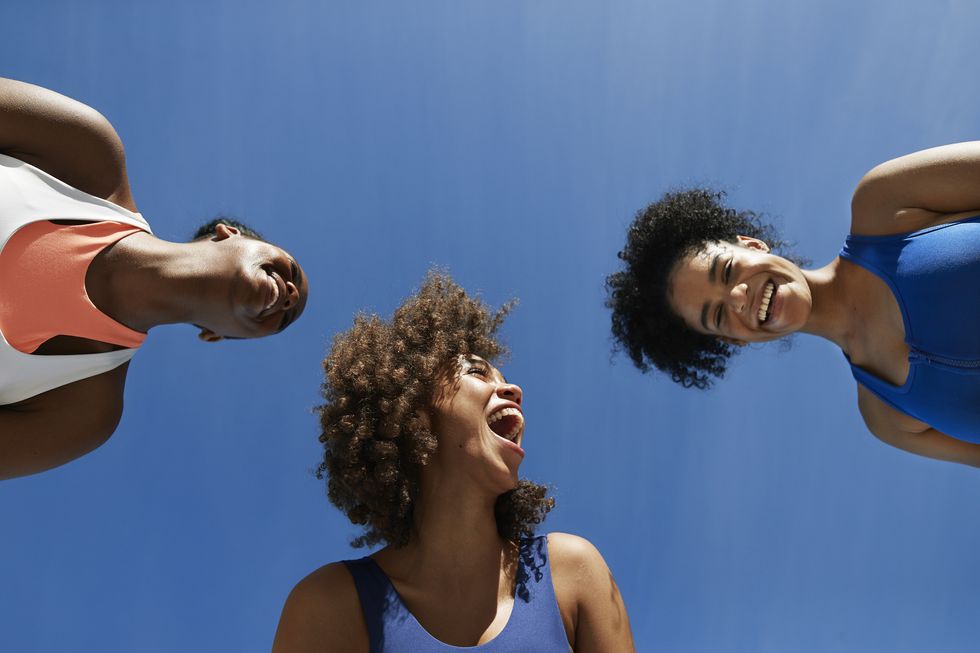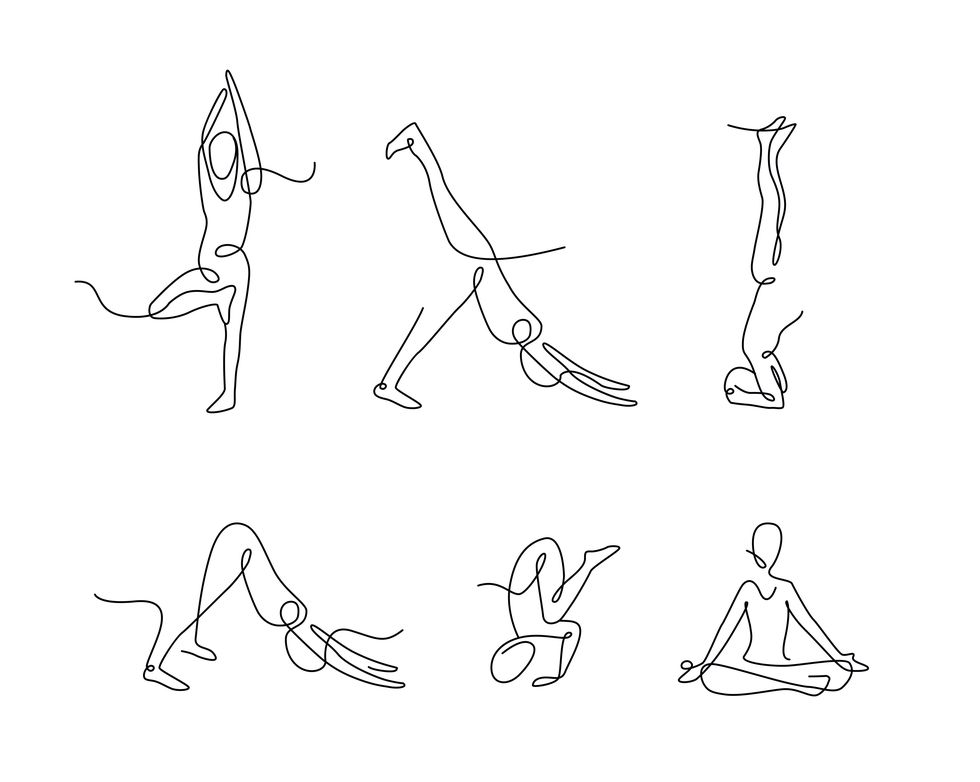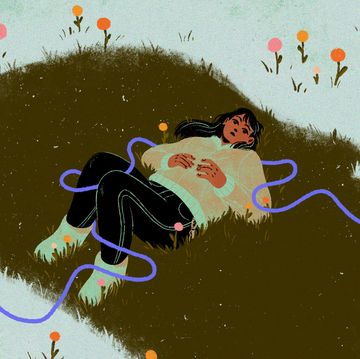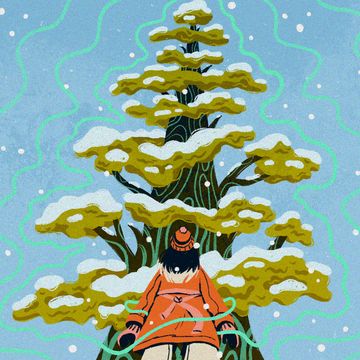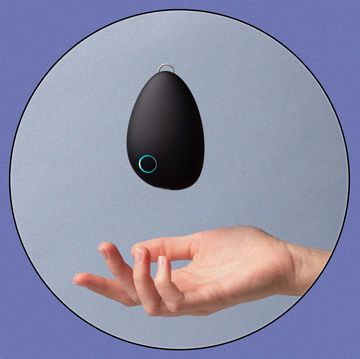You’ve got your headphones on, favorite music blaring. You’re running alongside a scenic road, your steps falling in rhythm with the music. Each stride feels effortless, like you’re flying through air or walking on water. There’s this newfound energy, a second wind. All at once, your head feels clear, your entire being seems lighter, and any trace of pain or discomfort miraculously disappears. You’re in a groove, a rhythm, a flow, a zone. You don’t want to stop or come down.
You’ve just experienced the proverbial “runner’s high.” Brought on by an intense run or after a lengthy bout of exercise, runner’s high is a deeply relaxing and euphoric state that some say makes them feel like they could run forever. A 2004 study published in the British Journal of Sports Medicine found running elicited “pure happiness, elation, a feeling of unity with one’s self and/or nature, endless peacefulness, inner harmony, boundless energy, and a reduction in pain sensation,” similar to descriptions “made by people who describe drug or trance states.” The chemicals released during this blissful burst temporarily elevate mood, reduce stress and anxiety, provide feelings of calm, and shield us from pain. This exercise-induced state of consciousness was once believed to be the result of an endorphin rush, but a groundbreaking study published in the PNAS journal in 2015 discovered that endocannabinoids, microscopic molecules naturally produced by our bodies, may also be heavily linked to this unmatched feeling of therapeutic ecstasy.
The endogenous cannabinoid system — also known as the endocannabinoid system — was named for the plant that led to its discovery and is the same system activated by compounds found in cannabis, including cannabidiol (CBD) and tetrahydrocannabinol (THC). While exercising, both endorphins and endocannabinoids are released into the bloodstream. Researchers found that — unlike endorphins — endocannabinoids, because of their smaller size, can cross the blood-brain barrier, which is a system that allows only certain, vital nutrients and substances to reach the brain. “With its complex actions in our immune system, nervous system, and virtually all of the body’s organs, the endocannabinoids are literally a bridge between body and mind,” Bradley E. Alger, Ph.D., wrote in a 2013 study published in Cerebrum: the Dana Forum on Brain Science.
When endocannabinoids interact with the receptors in the brain’s endocannabinoid system, which plays a central role in the control of fear, anxiety, and stress, the “feel-good” effects are released. These signaling molecules calm us, soothe us, and grant us a general sense of well-being. You didn’t quite ask, but the answer is yes — you can get “high” from exercise, au naturel.
Not everyone experiences the sudden, short-lived feeling of energy, accomplishment, optimism, strength, power, or calm while running. For those who have never experienced runner’s high but would like to, there’s good news. There are a number of other activities that can trigger endocannabinoids and naturally anoint us with the holy feeling responsible for runner’s high — without actually running, of course.
How to get a natural high
Yoga, meditation, and breath work
Many have said that, for them, runner’s high feels like being engulfed in a complete state of peace. You can achieve this same mode of intoxicating unity when you practice yoga, meditation, or breath work — or a combination of all three.
Just like endocannabinoids are a bridge between the mind and the body, yoga is a mind-body-spirit connection. A 2020 research article from the Journal of Evidence-Based Complementary & Alternative Medicine found that “inner engineering practices” at a yoga retreat, including meditation and breath work, increased endocannabinoids in the body and showed both short-term and sustained mental-health improvement. The researchers found through surveys that the participants’ “depression and anxiety scores decreased, while focus, happiness, and positive well-being scores increased immediately after retreat from their baseline values.” All improvements were reported to last for at least one month afterward.
Stress and anxiety negatively impact endocannabinoid levels in your endocannabinoid system, so when you slow down and relax the mind and breath, you boost these levels back up, and your body begins to find its way back to a balanced state of homeostasis. When we become centered, it positively affects our endocannabinoid system by combating stress, anxiety, and negative thinking. If you’re a first-time meditator or prefer structure, you can try a guided meditation by length on the free app Insight Timer.
Acupuncture
Pain reduction and relief is a leading reason people seek out acupuncture, which is a healing practice in traditional Chinese medicine where thin needles are strategically inserted into the body at certain acupoints. Acupuncture activates the body’s opioid system — a network of receptors in the brain that can be triggered by activities like getting enough sunlight and sleep, and also receiving a massage, which relieves pain and relaxes the body and mind. Recent research has found that the endocannabinoid system may also play a role in how acupuncture is able to reduce the sensation of pain.
A 2009 study published in the journal Stroke discovered that electroacupuncture activates receptors in the central nervous system and increases the number of endocannabinoids in the brain, as well as endorphins. Just like runner’s high, you can experience peace and pain relief through acupuncture. No pain, more gain.
Socializing
Social interaction — whether through physical contact or a good conversation — is an incredible way to stimulate the endocannabinoid system, specifically an endocannabinoid known as anandamide.
“If you could peek into the brain of two puppies hugging each other, you would see anandamide traveling from one group of neurons to another carrying the message: ‘This is fun; I want more of it!’” Dr. Daniele Piomelli, a distinguished professor of anatomy and neurobiology at University of California, Irvine’s School of Medicine, says in an email to Shondaland. The same goes for humans. “What we know is that the company of others stimulates the brain to produce oxytocin, which stimulates in turn the production of anandamide. The ‘reward equals pleasure’ social animals experience when in company requires both oxytocin and anandamide.”
People who experience runner’s high say it often happens when they run in a beautiful, meaningful, or relaxing place, and the same goes for other endocannabinoid-inducing activities. The endocannabinoid system thrives in a stress-free environment, so when you’re lost in laughter with good friends or cozying up with a loved one, your worries are nonexistent. A good time is the perfect breeding ground for a gleeful natural high. Today’s life assignment: more cuddling, hugging, and laughing.
Any voluntary and enjoyable exercise
The key ingredients to a euphoric cannabinoid-induced cocktail seem to be this: a great environment, engaging in something enjoyable, and doing an activity that is physical. This means throw a solo dance party, swim your heart out, sneak a steamy session between the sheets, get cycling or hiking, or put on a pair of skates and hit the streets — or the ice. Any time you can submerge yourself in a zone or enter a state of zen and wonder, you’re on your way to a natural, heavenly high.
Mia Brabham is a staff writer for Shondaland.
Get Shondaland directly in your inbox: SUBSCRIBE TODAY
